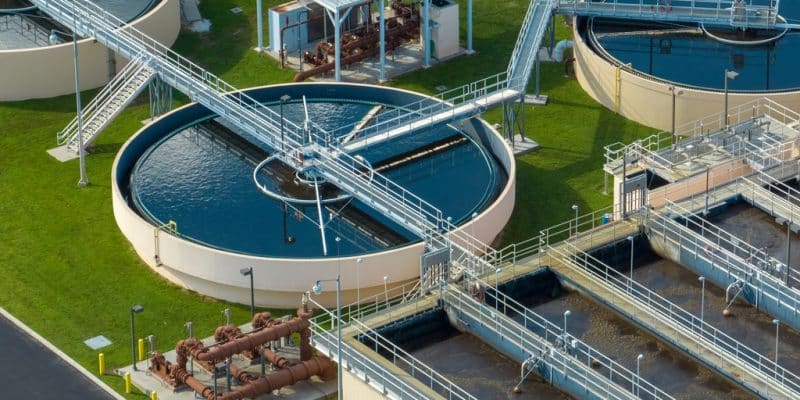Wastewater may seem undesirable at first glance, but it is a precious resource. Although talk of recycling this effluent into drinking water began in the 1950s, almost all countries in the world are still in the early stages of implementing this practice, which varies according to the type of wastewater. With Jacques Momeux, Chairman of France Industrie Assainissement (FIA), we explain how urban or domestic wastewater is treated to make it drinkable.
Imagine a world where drinking water was available 24 hours a day, morning, noon and night… This ideal would be within reach according to a number of experts in the water sector, including Jacques Momeux, Chairman of France Industrie Assainissement (FIA), a company specialising in water treatment. All we need to do is make the most of wastewater (domestic or urban, industrial, agricultural, grey, etc.), a precious resource in a world where available freshwater is limited and demand is rising.
The United Nations Educational, Scientific and Cultural Organisation (UNESCO) deplores the fact that, even today, much of this effluent is discharged into the environment without being collected or treated. This is particularly true in low-income countries, most of which are located in Africa, where on average 8% of wastewater is treated, compared with 70% in developed countries. Lack of expertise is thought to be one of the major causes of the low level of exploitation of wastewater to alleviate water shortages. In 2022, 418 million Africans were still living without drinking water, according to the United Nations Children’s Fund (UNICEF).
A detailed look at the different stages of recycling
However, eliminating all health risks from wastewater, particularly urban wastewater, is no easy task, and Jacques Momeux tells us why.
The facts :
- Analysis of wastewater
Urban wastewater is collected from households, businesses and other sources through a system of pipes and transported to a treatment plant, where it is analysed. The aim is to determine whether it comes from a conventional source or is brackish. In the latter case, it must first be desalinated before moving on to the next stage, which is pre-treatment.
- Pre-treatment
During the pre-treatment stage, particles such as large debris, suspended solids and floating matter are removed from the wastewater. Screens are used to retain debris, decanters to separate solids and liquids, and sieving processes to remove larger objects.
- Biological treatment
The pre-treated water then goes through a biological treatment process in aeration tanks where micro-organisms break down the organic matter present.
- Advanced treatment
Once the organic matter has been removed, the wastewater then undergoes advanced treatment, which may include several stages such as filtration through membranes, reverse osmosis to eliminate remaining contaminants, adsorption on activated carbon to absorb organic compounds, and possibly additional disinfection using ultraviolet (UV) light. Ozonation or chlorination is also necessary to eliminate bacteria, viruses and other micro-organisms from the effluent.
- Recycling into drinking water itself
After this in-depth treatment, the water is considered to be of sufficient quality to be transformed into drinking water. It can be stored in drinking water reservoirs before being distributed to households and businesses via distribution networks.
The process described by Jacques Momeux is the same one used in his compact, mobile, modular and less expensive water treatment plants deployed in several countries. For the expert, the idea is to have several decentralised, virtuous ecosystems that generate wealth. “The first difficulty in this practice is that there is no strict procedure for recycling urban wastewater into drinking water, but 100,000 different solutions for 100,000 different problems. So we have a working base and we add building blocks depending on the pollutants that will be present in the wastewater destined for recycling”, explains Jacques Momeux.
There is also the difficulty of maintaining constant water quality that complies with drinking water standards throughout the process, as variations in the composition of incoming wastewater can affect the effectiveness of the treatment.
It also has to contend with public resistance to the quality of drinking water and the very strict regulations governing water purification, which make the process more complex and demanding. Faced with water stress, the city of Windhoek in Namibia has succeeded in this challenge and has been recycling its municipal wastewater into drinking water since 1968.
While recycling wastewater into drinking water is technically feasible, there is still a financial challenge for municipalities and companies that want to take the plunge. Depending on the type of wastewater, substantial funding will be required. “The cost remains reasonable in relation to the health implications. After that, the greater the variety of contaminants you have (arsenic, poisons, mercury, etc.), the more sophisticated the technology is going to be. And the more sophisticated the technology, the more expensive the approach”, explains Jacques Momeux.
Overview of other wastewater recycling processes
Industrial wastewater: This comes from industrial activities often containing specific chemicals and various organic compounds.
Specific treatment: This varies according to the specific contaminants present. For example, chemical or physical processes adapted to the elimination of specific chemicals may be used.
Agricultural wastewater: This comes from farming activities and may contain fertilisers, pesticides and organic residues.
Adapted treatment: This is based on the use of techniques such as filtration, decantation and biological processes to eliminate agricultural contaminants.
Grey water: This is water from non-toilet sources such as washbasins, showers and washing machines.
Typical treatment: It requires less intensive filtration and disinfection systems than domestic wastewater.
Inès Magoum






